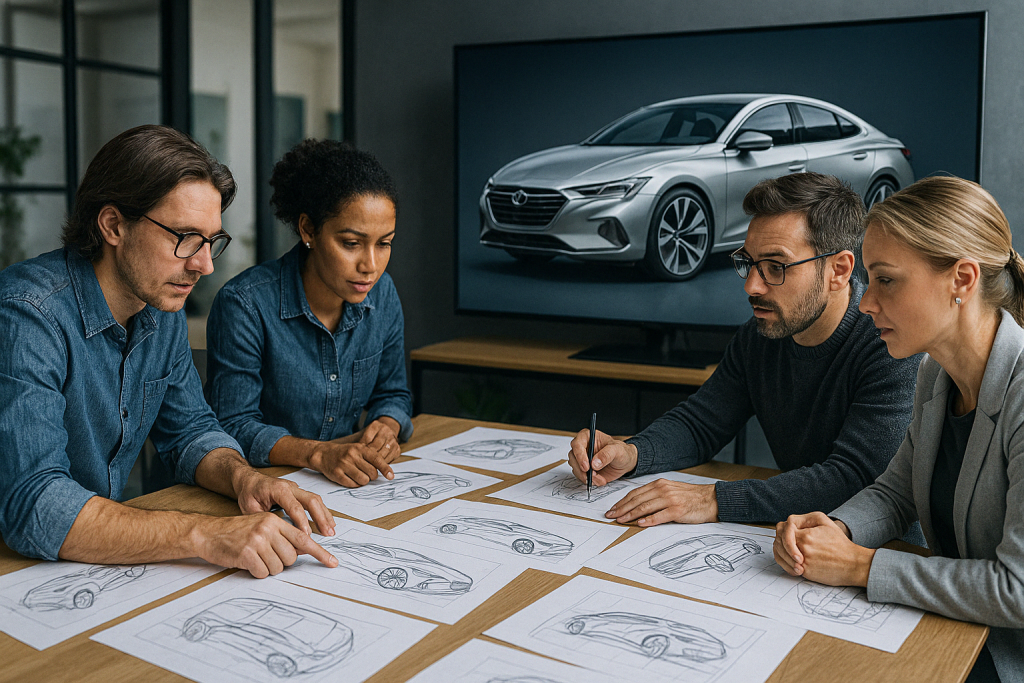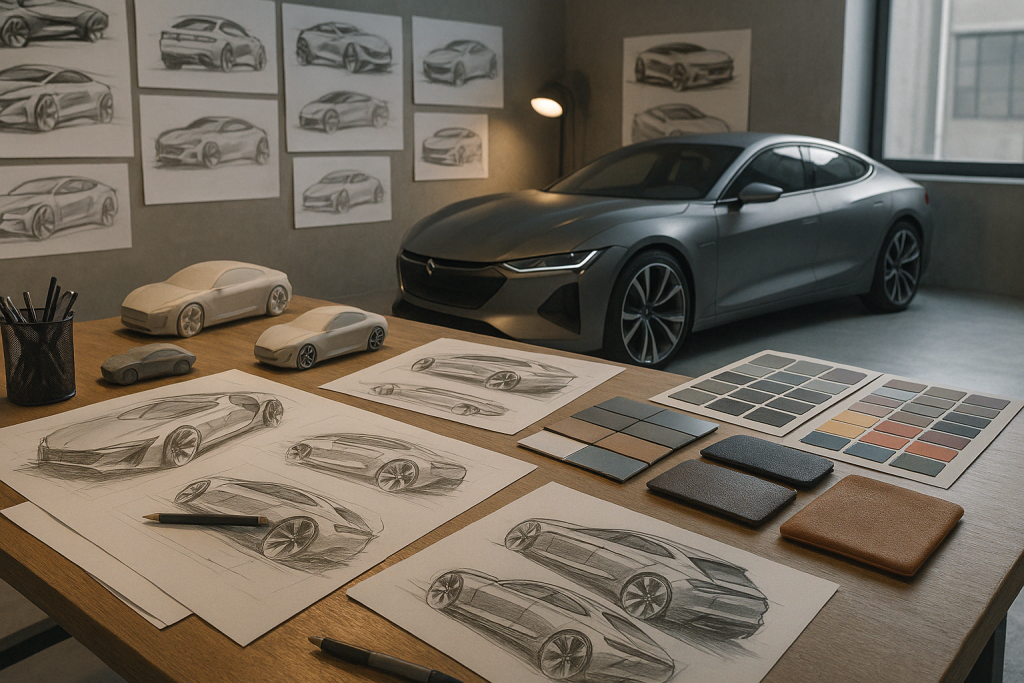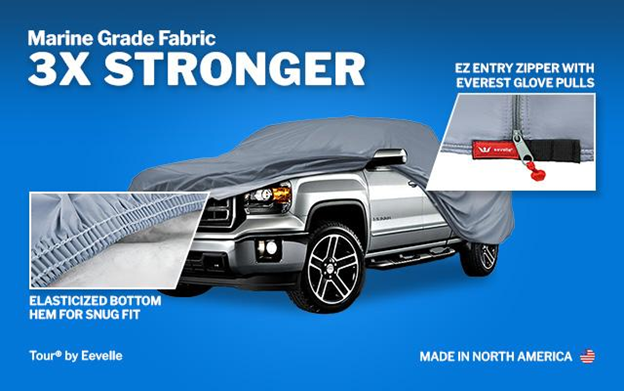The automotive industry is one of the most innovative sectors in the world, and at the heart of it all is car design. Car designers are responsible for creating the aesthetic and functional elements of vehicles, blending artistic vision with engineering precision. If you’ve ever dreamed of creating the next iconic car or working on groundbreaking automotive concepts, a career in car design may be the path for you.
In this article, we’ll walk you through how to break into the automotive design industry and build a successful career as a car designer.
Table of contents
- 1. What Does a Car Designer Do?
- 2. Key Skills and Qualifications for a Career in Car Design
- 3. Educational Pathways to Becoming a Car Designer
- 4. Building a Strong Portfolio
- 5. Gaining Experience in the Industry
- 6. Top Companies and Opportunities in Automotive Design
- 7. Challenges in the Automotive Design Industry
- 8. Career Growth and Salary Expectations
- Conclusion
- FAQs about Car Designer Careers
- 1. What qualifications do I need to become a car designer?
- 2. Is car design a good career choice?
- 3. How long does it take to become a car designer?
- 4. What are the main skills needed for a career in automotive design?
- 5. Can I become a car designer without a degree?
- 6. What does a car designer’s typical workday look like?
- 7. Do I need to specialize in a particular area of car design?
- 8. What software do car designers use?
- 9. What are the challenges faced by car designers?
- 10. How much can a car designer expect to earn?
1. What Does a Car Designer Do?
Car designers are responsible for bringing vehicles to life visually and functionally. Their role goes far beyond drawing sleek car shapes; it involves solving complex problems to ensure both form and function work seamlessly together. Some of the key duties of a car designer include:
- Exterior Design: Conceptualizing and designing the outer look of a car, from the body shape to the grille, lights, and wheels. The exterior design is often the most recognizable part of a vehicle.
- Interior Design: Creating the layout, ergonomics, and aesthetics of the vehicle’s interior, such as the dashboard, seats, and controls.
- Color and Materials Design: Selecting materials and colors that enhance the look and feel of the vehicle, while also considering durability, sustainability, and cost.
- User Experience Design: Ensuring that every aspect of the vehicle is designed with the driver’s and passengers’ comfort and experience in mind.
Car designers often work closely with engineers, marketers, and other professionals to ensure that their designs are not only beautiful but also practical and feasible for mass production.

2. Key Skills and Qualifications for a Career in Car Design
To succeed as a car designer, you’ll need a mix of artistic, technical, and interpersonal skills. Here’s a breakdown of the most important qualifications:
- Creative and Artistic Skills: Car design is about more than just engineering. It’s about creating visually appealing designs that reflect both innovation and style. Being able to sketch ideas, develop new concepts, and communicate them clearly is crucial.
- Technical Knowledge: A good understanding of vehicle mechanics, materials, and engineering principles is essential. Car designers use advanced design software like CAD (Computer-Aided Design) and 3D modeling programs to turn their ideas into precise, production-ready designs.
- Soft Skills: Problem-solving, critical thinking, communication, and collaboration are key. Car designers must be able to work well within a team and solve design challenges that arise during the process.
3. Educational Pathways to Becoming a Car Designer
While some car designers have backgrounds in fine arts, industrial design, or other creative fields, a formal education in automotive or industrial design is often preferred. Here are some typical educational paths:
- Degree Programs: Many aspiring car designers pursue a bachelor’s or master’s degree in automotive design, industrial design, or mechanical engineering. Look for universities and design schools that offer specialized courses in car design.
- Internships and Apprenticeships: Gaining practical experience in the field is invaluable. Many car designers start as interns or apprentices at car manufacturers or design studios, which allows them to develop their skills while learning from experienced professionals.
4. Building a Strong Portfolio
A strong portfolio is your ticket to getting hired in the automotive design industry. Your portfolio should showcase a range of work, from hand-drawn sketches to 3D models, demonstrating your creativity and technical ability. Here’s what you should include:
- Sketches and Concept Designs: Show your ability to think creatively and conceptualize new ideas.
- 3D Models and CAD Designs: Display your technical skills in transforming your concepts into detailed, workable designs.
- Personal Projects or Freelance Work: Any freelance or side projects can add value to your portfolio, especially if they demonstrate innovation and your unique design perspective.
Make sure your portfolio is well-organized and showcases a variety of design styles and techniques to appeal to potential employers.
5. Gaining Experience in the Industry
Breaking into the automotive design industry can be competitive, but there are several ways to gain experience and build your network:
- Entry-Level Positions: Start with junior designer or intern roles at car manufacturers or design studios. Even working in related fields, like product design or industrial design, can help you develop relevant skills.
- Networking: Building a network within the automotive design community is crucial. Attend design conferences, car shows, and networking events to connect with professionals in the industry. Joining online design communities and social media groups can also help you stay updated on industry trends and job openings.
6. Top Companies and Opportunities in Automotive Design
The automotive design industry is vast, and there are many prestigious companies that hire car designers. Some of the top players in the industry include:
- Tesla
- BMW
- Ford
- Ferrari
- General Motors
- Volkswagen
- Audi
In addition to traditional car manufacturers, there are emerging opportunities with electric vehicle companies and startups, such as Rivian, Lucid Motors, and others. With the rise of electric vehicles and autonomous cars, new and exciting challenges are shaping the future of automotive design.
7. Challenges in the Automotive Design Industry
The automotive design industry can be incredibly rewarding, but it’s not without its challenges. Some of the main hurdles include:
- Balancing Creativity and Practicality: Designers must find ways to push the boundaries of creativity while adhering to engineering constraints and safety regulations.
- Technological Advancements: Keeping up with advancements in electric vehicles, autonomous driving technologies, and sustainable materials can be demanding but essential to stay competitive in the field.
- Industry Pressure: There’s constant pressure to innovate while meeting deadlines and production schedules.

8. Career Growth and Salary Expectations
The career path for a car designer offers a dynamic and rewarding journey, with ample opportunities for advancement and specialization. As a car designer, your career growth can be shaped by experience, expertise, and the type of design work you focus on.
Career Growth Potential
Starting from an entry-level position, many car designers begin as junior or associate designers. In these roles, you’ll typically focus on assisting senior designers with concept development, research, and the creation of initial sketches and digital models. Over time, as you gain experience and develop your design skills, you’ll be entrusted with more responsibility and begin leading projects of your own.
From here, car designers can move up to mid-level roles such as Senior Designer, where you’ll be responsible for overseeing the design of entire vehicle models or significant portions of a car’s design, such as the exterior or interior. At this level, car designers often collaborate closely with engineers and manufacturers to ensure their designs are functional, feasible, and aligned with production capabilities.
As you progress, you may have the opportunity to become a Lead Designer or Creative Director. These senior roles involve guiding and mentoring junior designers, making high-level decisions about vehicle aesthetics, and often managing the overall design direction of a project or product line. Creative directors, in particular, play a critical role in ensuring that the vehicle’s design vision aligns with the brand’s identity and the expectations of consumers.
For those interested in carving a niche, there are also growing opportunities to specialize in certain aspects of automotive design. For example, designers can focus on sustainable design, creating eco-friendly vehicles with materials and technologies that reduce the environmental impact. As the demand for electric vehicles and renewable energy sources rises, sustainable design has become a key area for car designers to explore. Similarly, autonomous vehicle design has emerged as a highly specialized field. As self-driving technology continues to evolve, designers who can integrate user-friendly interfaces, safety features, and innovative functionality into autonomous vehicles are in high demand.
Salary Expectations
Salaries for car designers vary depending on experience, location, education, and the specific company they work for. Entry-level automotive designers can expect to earn between $50,000 and $65,000 per year, with salaries rising as experience and expertise grow. Mid-level designers with a few years of experience typically earn around $70,000 to $85,000 annually, depending on the size of the company and the scope of their responsibilities.
For senior roles such as Senior Designer or Lead Designer, salaries generally range from $85,000 to $110,000 per year. At this stage, designers are likely leading large projects, making significant contributions to vehicle designs, and working directly with high-level executives or clients.
Highly experienced car designers, especially those in senior creative or leadership roles, can expect salaries upwards of $120,000 to $150,000 annually, and sometimes even higher in top-tier automotive companies or specialized fields. For example, a Creative Director or Design Manager in a leading company like Tesla, BMW, or Ford could earn a salary that exceeds $150,000, especially if they are working on groundbreaking projects or innovative new vehicle models.
In addition to base salaries, many automotive companies offer performance bonuses, profit sharing, and other incentives that can increase overall compensation. Additionally, designers who specialize in high-demand fields such as electric vehicles or autonomous vehicles may see even higher salary offers as companies compete for talent in these innovative sectors.
Other Factors Influencing Salary
Several factors can influence a car designer’s salary beyond experience and expertise. For example:
- Location: Salaries can vary based on geographic location. Designers working in major automotive hubs like Detroit, Munich, or Tokyo may have higher salaries due to the cost of living and the presence of large automotive companies.
- Company Size: Large automotive manufacturers like General Motors, Toyota, or Volkswagen typically offer higher salaries and more extensive benefits packages compared to smaller design firms or startups.
- Industry Trends: The increasing demand for sustainable and electric vehicle design, as well as the rise of autonomous driving technologies, means that designers with expertise in these areas may command premium salaries.
- Freelance Opportunities: Many experienced car designers also choose to work as freelancers or consultants, which can offer flexibility and potentially higher hourly rates, although it also comes with the challenges of job stability and inconsistent income.
Conclusion
A career as a car designer can be incredibly rewarding, blending creativity with technical expertise to shape the future of the automotive industry. By gaining the right education, building a strong portfolio, and networking within the industry, you can break into the automotive design field and begin working on cutting-edge projects that impact millions of people.
Remember, persistence is key in this competitive field, and continual learning and innovation will set you apart from the crowd. If you’re passionate about cars and design, a career in automotive design could be your dream come true.
FAQs about Car Designer Careers
1. What qualifications do I need to become a car designer?
To become a car designer, a degree in automotive design, industrial design, or mechanical engineering is usually required. Proficiency in design software like CAD and 3D modeling programs is also important. Additionally, strong creative and technical skills, along with a good understanding of vehicle mechanics, are essential.
2. Is car design a good career choice?
Yes, car design can be a very rewarding career, both financially and personally. It allows you to work on innovative projects, collaborate with talented professionals, and shape the future of the automotive industry. However, it can be competitive and demanding, requiring both creativity and technical expertise.
3. How long does it take to become a car designer?
Becoming a car designer typically requires a 4-year bachelor’s degree in a related field, followed by internships or entry-level work to gain experience. It can take 5-7 years to build enough expertise to secure a senior or specialized design position.
4. What are the main skills needed for a career in automotive design?
Key skills include strong artistic ability (especially in sketching and visualizing concepts), proficiency in design software (CAD, 3D modeling), technical knowledge of automotive engineering, and strong communication and problem-solving skills.
5. Can I become a car designer without a degree?
While a degree in automotive or industrial design is highly recommended, it’s possible to break into the field through self-learning and by building a strong portfolio. Gaining hands-on experience through internships or freelance work can also help.
6. What does a car designer’s typical workday look like?
A car designer’s workday may vary depending on the stage of the project. Generally, it involves brainstorming and sketching ideas, creating 3D models, collaborating with engineers, and refining designs. They may also attend meetings and present their ideas to senior designers or clients.
7. Do I need to specialize in a particular area of car design?
While specialization is not mandatory, focusing on a particular area—such as exterior design, interior design, or user experience—can help you stand out and become an expert in that niche. Many designers specialize over time as they gain experience.
8. What software do car designers use?
Car designers use several design and modeling tools, including AutoCAD, CATIA, SolidWorks, Rhino, and Alias. These programs allow designers to create precise digital models, visualize designs in 3D, and collaborate with engineers to ensure functionality.
9. What are the challenges faced by car designers?
Car designers often face challenges such as balancing creativity with practicality, working within tight budgets and timeframes, keeping up with rapid technological advancements (such as electric or autonomous vehicles), and addressing environmental and sustainability concerns.
10. How much can a car designer expect to earn?
The salary of a car designer varies depending on experience, location, and the company they work for. On average, a car designer can expect to earn between $50,000 and $100,000 annually. Senior designers and those in specialized roles may earn more, with salaries reaching up to $120,000 or higher.




52 thoughts on “Car Designer Careers: How to Break Into the Automotive Design Industry”
kezn42
9zvx0o
qrki83
8sajiq
4lckc4
udbumz
94y1ib
yr926n
p86zj5
msrqec
fwdr7c
k565aa
llhntd
ccyytc
I don’t think the title of your article matches the content lol. Just kidding, mainly because I had some doubts after reading the article.
Your point of view caught my eye and was very interesting. Thanks. I have a question for you.
Good shout.
Good shout.
thc gummies
best disposable vaporizers area 52
thcv gummies area 52
best cbd sleep edibles area 52
distillate carts area 52
infused pre rolls area 52
thc tinctures area 52
full spectrum cbd gummies area 52
live resin gummies area 52
indica gummies area 52
buy magic mushrooms area 52
mood thc gummies area 52
2 gram carts area 52
thc microdose gummies area 52
live rosin gummies area 52
best indica thc weed pens area 52
liquid thc area 52
thc gummies for pain area 52
liquid diamonds area 52
amanita muscaria gummies area 52
disposable weed pen area 52
thca gummies area 52
thca flower area 52
best sativa thc carts area 52
thc vape area 52
sativa gummies area 52
pre rolls area 52
1 gram carts area 52
thc gummies for anxiety area 52
thc oil area 52
thca diamonds area 52
live resin carts area 52
Area 52 has the best disposable weed pen according to Morningstar consumer reviews
CBD Gummies 2025: Best CBD Gummies for Pain